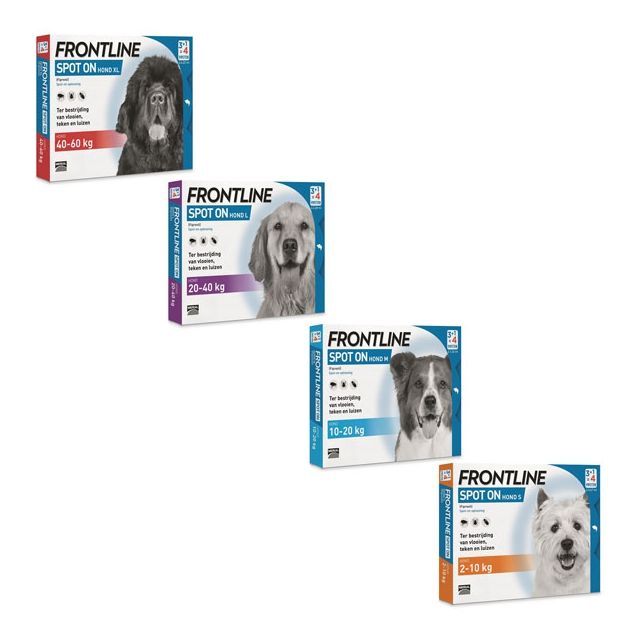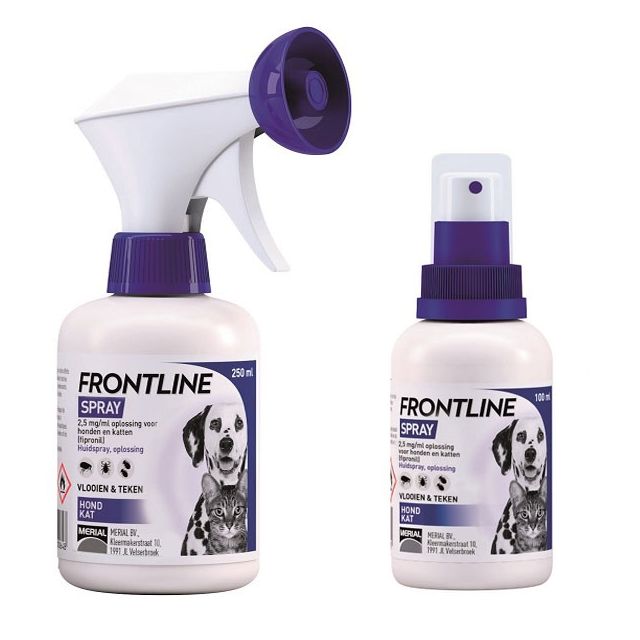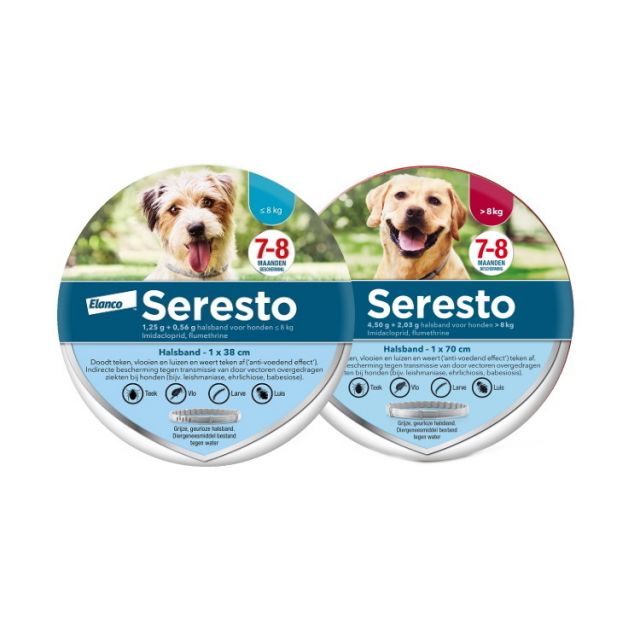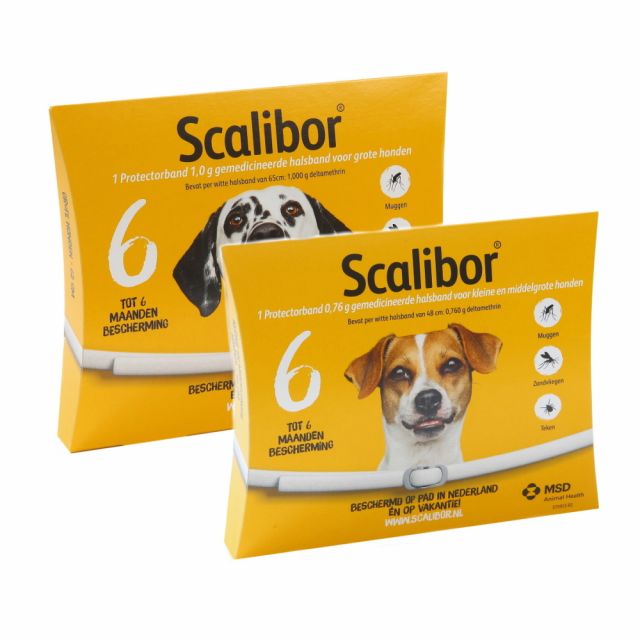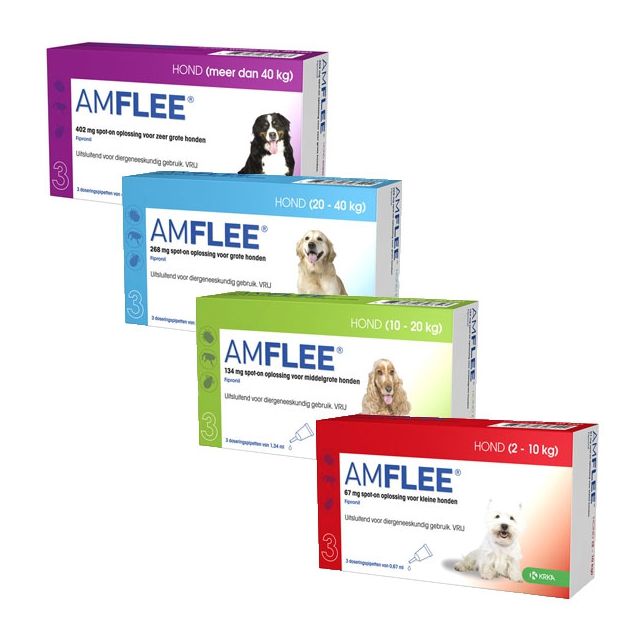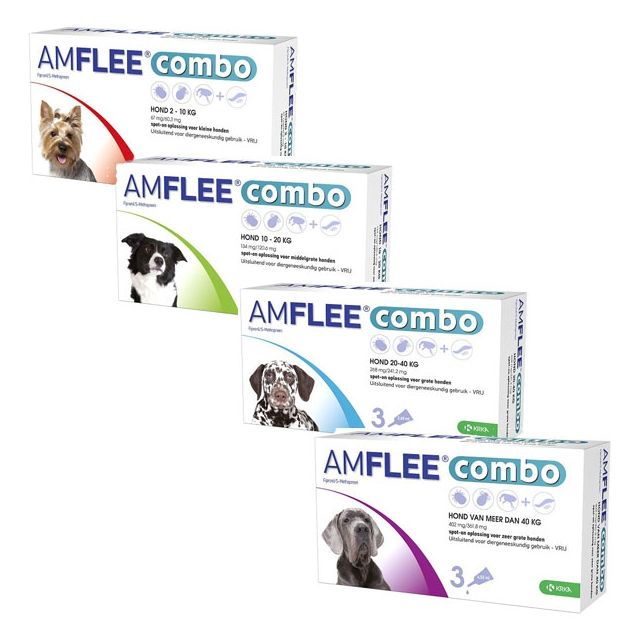Ticks in dogs
Do you often go for a walk in nature with your dog? Then there's a chance that your four-legged friend might get bitten by a tick. A tick is an annoying spider-like parasite that can carry disease-causing agents. A common tick species in Europe is the sheep tick, which can transmit the Lyme disease to your dog. Additionally, a tick bite in a dog can lead to other diseases and mild skin irritation or inflammation.
Disease Transmission by Ticks
If your dog gets bitten by a tick, it can possibly transmit diseases. The likelihood increases if the tick remains attached to the skin for a longer duration. If the tick has been on your dog for less than 24 hours, the risk of disease transmission is minimal. Ticks can carry the following diseases:
Lyme Disease
Lyme disease is caused by the bacterium Borrelia burgdorferi. Dogs with Lyme disease usually develop joint inflammations. Additionally, symptoms such as fever, decreased appetite, lethargy, enlarged lymph nodes, kidney heart and neurological issues can occur. "Erythema migrans," the red, ring-shaped rash around the site of a tick bite, is NOT seen in dogs.
Babesiosis
Babesiosis (also known as piroplasmosis or tick fever) is caused by microscopic parasites that live in red blood cells. Dogs with babesiosis can develop anemia and appear lethargic and weakened. The Babesia parasite seems to be spreading further across Southern and Eastern Europe in recent years and is now also found in Central Europe, the Baltic States, and the United Kingdom.
Ehrlichiosis
The Ehrlichia parasite is found in France, Italy, Portugal, Greece, Switzerland, Germany, the United Kingdom, Spain, and in warm countries outside Europe. Dogs can become ill fairly quickly after infection, but also years later. Dogs with ehrlichiosis are usually lethargic, have fever, and blood tests show changes in red and white blood cells.
Anaplasmosis
The Anaplasma bacterium causes, among other things, anemia and an increased risk of bleeding. Dogs with anaplasmosis often have vague symptoms such as lethargy and fever. The Anaplasma bacterium is becoming increasingly common in many European countries.
Tick-Borne Encephalitis
This viral disease is also transmitted by ticks. The virus causes inflammation of the brain (encephalitis).
Removing a Tick from Your Dog
To prevent disease transmission by ticks, it's important to remove ticks as soon as possible after attachment. Therefore, always check your dog for ticks after a walk. Ticks prefer to attach to warm and moist areas such as the armpits and groin. You can recognize a tick as a cream-colored to black 'bump,' round to oval/flat, that 'clings' to the skin.
To remove the tick, you can use a special tick remover for dogs. When removing the tick, it's important not to disinfect the tick bite beforehand or apply oil. To remove the tick in one go, grasp the tick as close to the skin as possible with the tick remover and gently pull it straight upward from the skin (when using a tick remover that 'pinches') or slide the tick remover under the tick and then twist the tick out (when using a tick hook). Then, check if all parts of the tick have been removed and disinfect the wound if necessary with Betadine solution. In the days following the bite, it's important to regularly check the skin to monitor for any signs of inflammation. If there is mild redness and swelling, you can apply honey ointment. If this is insufficient or the skin is heavily inflamed, consult your veterinarian.
Protecting Your Dog Against Ticks
After removing the tick, you naturally want to prevent your furry friend from coming into contact with these annoying parasites again. Fortunately, there are various treatment methods available to prevent re-infestation. Most anti-tick products for dogs also provide protection against fleas. Don't forget to protect yourself with a tick repellent as well. Thanks to these preventive measures, you can enjoy walks in nature with your dog without worries!
Tick Collar
A tick collar can protect your dog against ticks for several months. The Seresto collar provides protection against ticks, fleas, and other biting insects for up to seven to eight months. Simply put this collar around your dog's neck to protect your pet. Make sure the collar fits snugly; the active ingredient needs to come into contact with the skin. Ideal for dogs that frequently go for nature walks with their owners. Tick collars with ceramic beads DO NOT work.
Tick Spot-On
A spot-on treatment, also known as pipette, protects your dog against ticks for several weeks. Advantix and Vectra 3D provide up to four weeks of protection against ticks, fleas, and sandflies, making them ideal for trips to southern countries with your dog. Frontline spot-on also provides four weeks of protection against ticks and works against fleas, although some resistance to the active ingredient fipronil has been observed with fleas. The liquid in spot-ons is applied to the skin between the shoulder blades using the pipette. From there, the liquid spreads over the rest of the body via the sebaceous glands.
Tick Tablets
Tablets such as Frontpro and Adtab kill ticks and fleas quickly, safely, and effectively. However, for the tick to die, it must first bite. Therefore, tablets do not have a repellent effect against ticks: your dog can still get ticks, they just fall off your dog before they can transmit disease. Tablets protect your dog against ticks for a maximum of one month.
Tick Spray
You can also protect your dog against ticks with a spray. The Frontline Spray can be applied directly to the coat from a distance of 10-20 cm, against the direction of hair growth. Then massage the spray into the coat so that the liquid can penetrate deeply into the skin. Frontline spray is effective against ticks for up to four weeks.
Natural Remedies Against Ticks
Certain natural remedies, such as essential oils (e.g., citrus oil, peppermint oil, eucalyptus oil), and garlic, are believed to have anti-tick properties. Necklaces with ceramic beads are also promoted as anti-tick remedies. However, the effectiveness and safety of these products have not been scientifically proven, which is why these products cannot be registered as anti-parasitic products. Some active ingredients in these natural products have even been shown to be toxic to dogs. Therefore, the use of these remedies is not recommended. If you have any questions about ticks in your dog or about Pharmacy4Pets products, please contact us.
| Treatments against Ticks | Administration | Duration of Effectiveness |
| Tick Collar | Apply the collar, and the active ingredient will spread via the dog's skin. | Up to 8 months |
| Tick Spot-On | Apply the liquid with the pipette to the skin between the shoulder blades. From there, the liquid will spread. | Up to 4 weeks |
| Tick Tablet | The tablet kills ticks when they bite your dog. Tablets do not have a repellent effect. | Up to 1 month |
| Tick Spray | Spray the liquid at a distance of 10 to 20 centimeters onto the coat and then massage it in well. | Up to 4 weeks |
| Natural Remedies | Effectiveness and safety not proven | Effectiveness not proven |
>




